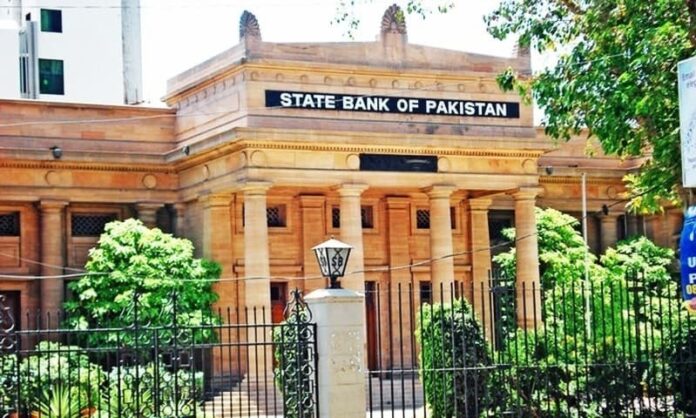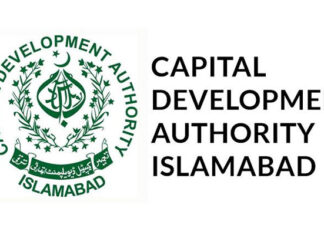–SBP says virus has created ‘unique’ challenges for a monetary policy due to its non-economic origin
–MPC says inflation could fall further than expected if economic activity fails to pick up as expected
KARACHI: The State Bank of Pakistan, in a meeting of the Monetary Policy Committee (MPC) on Friday, slashed the country’s policy rate by 100 basis points from 9pc to 8pc.
The MPC said this action was made light of the SBP’s inflation outlook, which has improved given the recent cut in domestic fuel prices.
This is the fourth time in three months that the SBP has slashed the policy rate. In the space between March 17 and May 15, the SBP has now cut the policy rate by a whopping 525 basis points, from the relatively high 13.25pc to 8pc.
More specifically, it cut the policy rate by 75 basis points to 12.5pc on March 17, by a further 150 basis points to 11pc on March 24, and by 200 basis points to 9pc on April 16.
Central banks around the world have slashed interest rates, though perhaps none as aggressively as Pakistan’s SBP. According to a recent report by Bloomberg, Pakistan has cut its interest rates the most this year, out of a survey of nine countries, including the US, Peru, South Africa, Turkey and Ukraine.
In explaining its rationale for cutting the policy rate, the SBP noted that the coronavirus pandemic had created ‘unique’ challenges for a monetary policy due to its non-economic origin.
“While easier monetary policy can neither affect the rate of infection transmission nor prevent the near-term fall in economic activity due to lockdowns, it can provide liquidity support to households and businesses to help them through the ensuing temporary phase of economic disruption,” the SBP clarified.
The SBP also maintained that the rapid policy rate cuts had helped maintain credit flows and bolstered cash flow of borrowers, thereby limiting contraction in the economy.
INFLATION EXPECTATIONS:
According to the SBP, inflation could fall closer to the lower end of the previously announced ranges of 11-12 percent this fiscal year and 7-9 percent next fiscal year.
In January 2020, the inflation rate had hit a record 14.56pc, according to data released by the Pakistan Bureau of Statistics (PBS). However, it has been declining since, slowing to 12.4pc in February, and then to 10.24pc in March, finally settling at 8.5pc in April. Many analysts expect it to drop to 8pc or 7pc in the coming months.
As part of the International Monetary Fund’s (IMF) loan agreement, Pakistan has been given strict instructions to maintain positive real interest rates (nominal interest rate minus inflation rate). The rapidly decreasing inflation rate has given the SBP wiggle room to decrease the policy rate.
For its part, the MPC said that the significantly reduced petrol and diesel prices by 30-40pc, in response to the continued fall in global oil prices, will further reduce inflation. It also said that both the fall in inflation in Pakistan since January and the expected further decline next year are the highest among comparable emerging markets.
However, the MPC did have some concerns about inflation. “Inflation could fall further than expected if economic activity fails to pick up as expected next fiscal year,” the statement said. “On the other hand, there are some upside risks from potential food-price shocks associated with adverse agricultural conditions. Price pressures could also emerge if the economy gains greater momentum in the second half of FY21. ”
PAKISTAN OUTLOOK:
The MPC was oddly optimistic about Pakistan’s economic and fiscal outlook, despite poor export and import numbers.
Exports declined by 10.8pc YoY in March, while imports contracted by 19.3pc YoY. The figures were even worse in April, with exports declining 54pc YoY, and imports declining 32pc YoY. However, the MPC maintained that the current account deficit had continued to narrow, and that the outlook for the external sector broadly remains stable.
“The recent fall in portfolio inflows will be offset by official flows committed by the international community, such that Pakistan’s external position remains fully funded. Together, these developments, buttressed by the flexible exchange rate regime, should continue to support a steady build up in the SBP’s foreign exchange reserve buffers,”
On the topic of remittances, the MPC called them resilient, though noting potential downside risks, given the economic difficulties across the world, especially in oil-exporting countries.
On the fiscal front, the primary balance recorded a surplus of 0.4 pc of GDP from July to March FY20, against a deficit of 1.2pc in the same period of FY19. This is the first nine-month surplus since FY16.
However, the substantial fall in economic activity since March significantly affected tax revenues. After rising by 17.5pc from July to February FY20, tax revenues declined sharply by 15pc in both March and April.
“Given the needed increase in spending to support healthcare, businesses, households and
more vulnerable segments of society, the fiscal deficit is expected to widen substantially in Q4,” the MPC said.
Large scale manufacturing witnessed a steep decline of 23pc in March, due to the virus. Meanwhile, high-frequency indicators of demand such as credit card spending, cement dispatches, credit off-take and POL sales showed a miecontraction in domestic economic activity in both March and April.
CONCERNS ABOUT PANDEMIC:
The MPC noted that Pakistan has begun to ease lockdowns, which could help support economic activity. However, it remained wary of the situation, noting that infections could rise again, leading to another wave of lockdowns and a sluggish recovery.
Besides, easing of lockdowns might not actually improve economic activity. As the statement pointed out, “In light of preliminary evidence from China and other countries that eased lockdowns earlier than others, activity in service sectors and consumption, which form a large part of the domestic economy, could remain subdued for longer.
The MPC was remarkably over-optimistic about the global economy, saying that “timely policy actions and international assistance, the initial volatility observed in domestic financial and foreign exchange markets has somewhat subsided in recent weeks, although global financial conditions remain considerably tighter than before the coronavirus outbreak.”
The MPC’s statement even managed to throw in a few good words for the IMF, noting that the recent $1.2 billion relief had helped restore the SBP’s foreign reserves position to close to pre-coronavirus levels of over $12 billion.
ANALYST EXPECTATIONS:
After the previous interest rate cuts of March and April were announced, many analysts felt that SBP would reduce the policy cut even further in light of the global pandemic, and falling inflation.
Profit surveyed 16 brokerage houses in the lead up to today’s policy announcement. Of those, 14 were under the impression that the SBP would cut the interest rate further, while a minority of two believed that the interest rate would remain steady. Of those that believed that a cut was likely, one said by up to 150 basis points, seven said by up to or exactly 100 basis points, two said by 75 basis points, and four said by 50 basis points.
Tahib Abbas, head of Research at AHL, said the announcement was in line with expectations. “As previously said, there is no need to maintain a high discount rate because the SBP wants the economy and demand to pick up gradually, and lowering the discount rate was necessary. The higher discount rate was to curb demand but now after Covid situation the government wants to pull up demand.”
Similarly, Saad Hashmi, executive director at BMA Capital, said the cut was in line with expectations and should bode well for market sentiments. “This underscores State Bank’s resolve to provide the necessary monetary accommodation in light of the pandemic,” he said.
Jehanzaib Zafar, head of research at BIPL Securities was disappointed, saying that some in the market were expecting a 150bps cut. “ But that was more of a hope than reality as inflation was expected to come down gradually,” he noted.
“The government seems to be leveraging the low inflation numbers in the next few months.” said Arslan Soomro, managing director at KASB Securities. “However, most pressing is the impact of this is on the lower debt servicing cost for the government. In these days when fiscal spending is high, the best SBP can do is to enable a cheaper-financing environment for the government to pursue relief measures.”

























Its good for country.
Hi I using this website